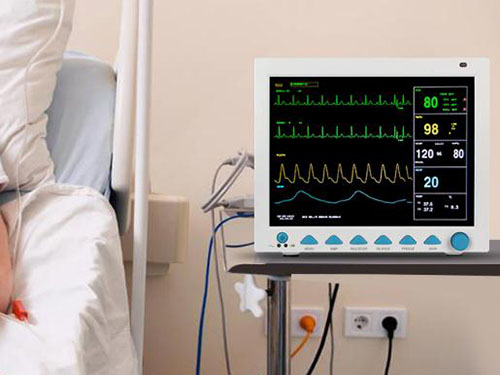paediatric oxygen saturation monitor
Paediatric oxygen saturation monitor is a device or system that measures and controls the physiological parameters of patients. It can be compared with the known set value, and an alarm will be issued when the standard is exceeded. The paediatric oxygen saturation monitor must continuously monitor the physiological parameters of the patient for 24 hours, find the trend of change in time, point out the critical situation, and provide the basis for the doctor's first aid and treatment, so as to minimize complications and achieve the purpose of treatment. Reduce and eliminate this situation. In addition to measuring and monitoring physiological parameters, the use of monitors also includes monitoring and processing medications and conditions before and after surgery.

Applicable people of blood oxygen saturation monitor
1. Elderly people over 60 years old.
The elderly’s heart, lungs and trachea are physiologically aging, resulting in less oxygen transported by the blood. There is less oxygen, and the physical condition is getting worse. Therefore, the elderly need to monitor the blood oxygen level with a blood oxygen saturation monitor every day. Once the blood oxygen is below the warning level, quickly add oxygen.
2. People who work more than 12 hours a day.
Because the brain's oxygen consumption accounts for 20% of the body's oxygen uptake, if the brain is overworked, the brain's oxygen consumption will inevitably increase. This makes it difficult to make ends meet. In addition to causing dizziness, fatigue, poor memory, unresponsiveness and other problems, it can also cause serious damage to the brain and myocardium. Therefore, such people also need to use a blood oxygen saturation monitor to measure blood oxygen content every day, monitor blood oxygen health in real time, and ensure heart and brain health.
3. Athlete
Vigorous exercise affects blood circulation, lowers blood oxygen, directly affects the body's aerobic capacity, and affects the speed of fatigue elimination. Whether you are engaged in professional sports or daily exercise enthusiasts, you must perform scientific exercises. The important physiological parameters on which scientific exercise is based are blood oxygen saturation and pulse rate.
4. Operators in a confined environment.
Confined environments include; high-altitude flight, diving operations, confined cabins or operations in tunnels, if improper handling or accidents occur, hypoxia can occur. The blood oxygen saturation monitor is used to detect the blood oxygen value and pulse rate value of oneself from time to time, and the corresponding oxygen uptake method is adopted to greatly avoid accidents due to hypoxia.
5. Patients with various cardiovascular and cerebrovascular diseases
Especially those with heart failure (such as coronary heart disease, rheumatic heart disease, congenital heart disease, etc.). Chronic obstructive pulmonary disease (COPD) and respiratory distress syndrome (ARDS) patients and other lung diseases: chronic bronchitis, pulmonary heart disease, asthma, etc. These diseases cause breathing difficulties, resulting in insufficient oxygen uptake, causing varying degrees of damage to the heart, lungs, brain and even kidneys. Therefore, the use of a blood oxygen saturation monitor to detect blood oxygen content will greatly reduce the incidence of respiratory diseases.
6. Those who live on the plateau or those with mountain sickness when they first entered the plateau area.
The normal range of blood oxygen saturation at low altitude is 94%-100%. Because of the thin atmosphere in high altitude areas, the normal SPO2 of the human body will decrease in this environment. For travelers or mountaineering enthusiasts going to high altitude areas, the monitoring carried out by the blood oxygen saturation monitor can ensure the safety of the journey of plateau tourism and high altitude mountaineering. Early detection, early diagnosis and early treatment can also be achieved for acute altitude diseases such as altitude pulmonary edema and altitude cerebral edema.
